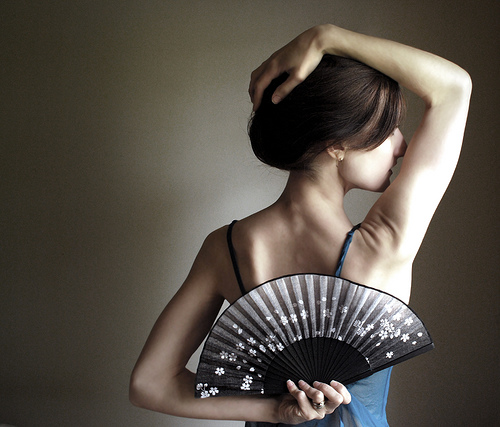
Light is an essential element of photography. The art of photography itself rests on the understanding and making the most of the available light. The lights affect the way the camera interprets and portrays the subject or the scene. Before using the lights for capturing the required effects and details, one should have a sound knowledge of the various features of lights. Check out the article on lighting and it’s features here. Let’s look at the various aspects of lights and technique of using the lights efficiently.
-
How To Efficiently Use Soft Light
Naturally available light on an overcast day provides you an opportunity of using the soft light to your advantage. While most of the photographers consider an overcast day a blessing for photographing outdoors, the consistent light on the overcast day may at times produce unflattering results. Using the photographing techniques of subtractive lighting and partial blocking of light can however render shape and form to the subject.
-
How To Use Hard Light Effectively
While overcast days are good for photography, bright sunny days offer a plethora of opportunities. The trick behind effectively utilizing the hard light lies in the art of controlling it. While hard light is suitable for capturing fine details and textures, you can consider the following techniques for controlling the hard light and producing the desired results.
- Back Lighting: Using the hard light as the back light results in lighting the edges of the subject.
- Using Shades: Placing the subject in the open shade, perhaps a tree or an archway helps in softening the harsh sunlight, preventing the ugly shadows and unwanted hot-spots in the photograph.
- Creatively Portraying The Shadows: Including the shadows formed owing to the hard light offers a creative edge. The shadows and reflections introduce an element of interesting-nessin the photograph.
-
How To Adjust Color Temperature
The light which appears white to the human eye has a color temperature which renders color cast to the scene. Owing to this fact, when you photograph early morning scene, it turns out blue and kills the warmth of the sunlight as observed by the human eye. To adjust the color temperature and render the appropriate colors to the scene, you need to tune and set the white balance of the camera to one of the presets or to the manual WB mode. For example if you want to introduce warmth in the final result, you can choose sunny preset while cloudy preset can be used to render a bluish tinge in the final results.
-
Understanding The Direction Of Light And Its Effect
The direction of the light plays a major role in depicting the desired effects. While direct light is desirable for capturing the fine details, back-lighting, side-lighting and diffused light has its own implications. Lighting the subject from the back helps in creating edge lighting effect, resulting in the halo effect and diffusing the light with the help of diffusers scatter the lights to evenly expose the subject.
-
Using The Fill Light To Your Advantage
Fill light is the extra light provided to the subject to fill the shadows (and dark areas) and balance the key light. The primary purpose of using the fill light is to soften the effect of key light which results in exposing the shadow areas of the scene. To create the fill light, bounce the lights off the walls or use the reflectors to soften the shadows. Using fill flash is also good option to lighten up the shadows produced by key light (especially when shooting in direct sunlight).
-
How To Enhance Texture And Fine Details
Hard light cast at an angle comes in handy for revealing the textures and fine details of the subject. When shooting outdoors, bright sunny days are an advantage for photographing the textures and details. In indoor shooting setup throwing the hard light on the subject imitates the sunlight effect and helps in portraying the shape, form, texture and minute details of the subject.
-
How To Enhance Saturation
Deciding on the saturation levels help in getting well-saturated and vivid colors in the photographs. To change the saturation level of the scene, just underexpose the shot by .3 to .7 EV using the exposure compensation button or prefer to shoot in RAW and enhance the saturation during post-processing stage. Slightly underexposing the scene gives the impression of darker colors.
-
How To Get The Glowing Effect
You can get the glowing effect or the halo effect around the subject by using the back-lighting. Adjust the placement of the subject such that the light source is behind the subject. The light from the back of the subject diffuses to form the glowing effect along the edges and thus is also known as edge-lighting.
-
How To Make And Use The Lens Flare
Lens flare is an optical artifact created when the source of light shows into the camera-lens. The scattering of the lights may produce polygon rings or circles, which can be used to induce dreamy effect in the scene. Generally, the flare is caused when using the long lens with bright source of light shining into the lens. However the lens-flares can give a beautiful dreamy effect to scenes, especially the portraits when used creatively.
-
Employing Naturally Available Objects To Control Light
The quality and attributes of light can be controlled and altered by using the natural objects to act as reflectors, diffusers and screens. Reflectors enable you to redirect the light towards the subject thereby reducing the shadows, diffusers help in softening the light and screens are used for either blocking, absorbing or concealing the light. The white walls of the room can be used as reflector, an overcast day serves the purpose of diffusing the light while the tree shade and archways can be used to partially block the light or come to help you on a bright sunny day. These natural elements help in controlling the attributes of light and thus help in making the most of the available light. Also, white acrylic or thermocol sheetscan work as excellent reflectors (and even as a backdrop).
How do you make use of the naturally available light?





great article. i love my flashes but sometimes you have to put them down and embrace the light